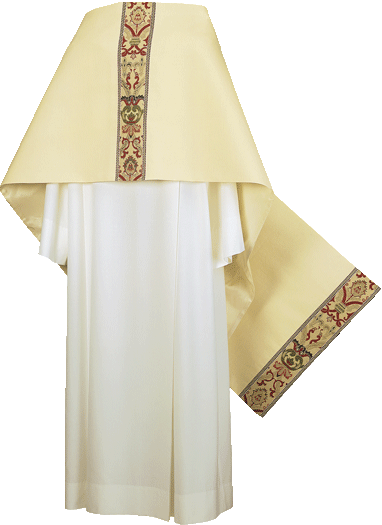
The humeral veil is the long, rectangular ‘cloak’ that is placed around the priest’s or deacon’s shouldersover the cope or other vestment when they carry the Blessed Sacrament in procession or bless with the Blessed Sacrament exposed in the monstrance during Benediction. It is usually very ornate and some humeral veils have pouches at the ends into which the person wearing it can put his hands. This makes it easier to hold the object being carried.
It is most often seen during the liturgy of Exposition and Benediction of the Blessed Sacrament. When the priest or deacon blesses the people with the monstrance, he covers his hands with the ends of the veil so that his hands do not touch the monstrance, as a mark of respect for the sacred vessel and as an indication that it is Jesus present in the Eucharistic species who blesses the people and not the minister.
The humeral veil is also seen at the Mass of the Lord's Supper when the Ciborium containing the Blessed Sacrament is taken in processionto the place of reposition, and again when it is brought back to the altar without solemnity during the Good Friday Solemn Celebration of the Passion of the Lord.
The reason for this is to show respect for what is being carried – the most precious treasure that we as Catholics have, the Lord Himself present in the Blessed Sacrament.